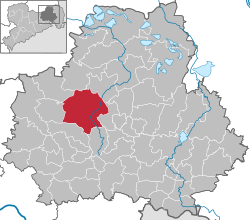Kamenz
| Kamenz | ||
|---|---|---|

Old town
|
||
|
||
| Coordinates: 51°16′N 14°6′E / 51.267°N 14.100°ECoordinates: 51°16′N 14°6′E / 51.267°N 14.100°E | ||
| Country | Germany | |
| State | Saxony | |
| District | Bautzen | |
| Municipal assoc. | Kamenz-Schönteichen | |
| Government | ||
| • Mayor | Roland Dantz (Ind.) | |
| Area | ||
| • Total | 53.15 km2 (20.52 sq mi) | |
| Population (2015-12-31) | ||
| • Total | 15,202 | |
| • Density | 290/km2 (740/sq mi) | |
| Time zone | CET/CEST (UTC+1/+2) | |
| Postal codes | 01917 | |
| Dialling codes | 03578 | |
| Vehicle registration | BZ, BIW, HY, KM | |
| Website | www.kamenz.de | |
Kamenz (Upper Sorbian: Kamjenc) is a town (Große Kreisstadt) in the district of Bautzen in Saxony, Germany. Until 2008 it was the administrative seat of Kamenz District. The town is known as the birthplace of the philosopher and poet Gotthold Ephraim Lessing.
The small town is located in the west of the Upper Lusatia historic region (West Lusatia), about 40 km (25 mi) northeast of Dresden and about 30 km (19 mi) northwest of Bautzen. Situated on the Black Elster river, between the West Lusatian Hills and the Lusatian Highlands rising in the south, the town was built on greywacke and granite rocks which were mined here for centuries. Kamenz station is the terminus of the Lübbenau–Kamenz railway line; it is also served by Regionalbahn trains from Dresden Hauptbahnhof, operated by the Städtebahn Sachsen company.
The Hutberg hill west of the town centre, at an elevation of 293 m (961 ft), is the site of an extended landscape park laid out in 1893. It is known for its major rhododendron and azalea collections flowering at Pentecost. In 1864 the Lessing Tower was erected on the hilltop, offering a panoramic view over the West Lusatian lands and the Upper Lusatian Heath and Pond Landscape in the north. About 32% of the nature in former Kamenz District is under protection, including a network of routes for riding by bicycle and hiking.
...
Wikipedia



